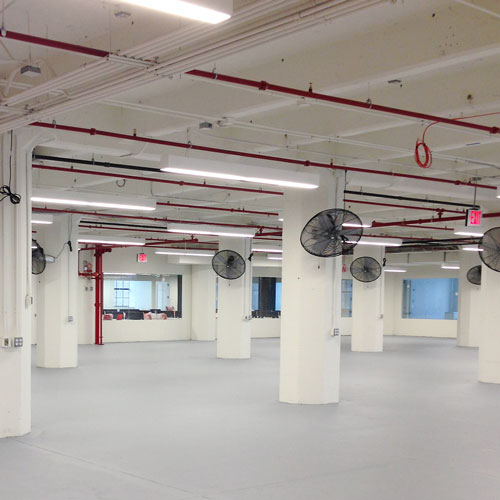 Matt Medina’s first look at a career in construction came at the end of a checkout line, bagging groceries in a Food Basket store in San Diego, California.
Matt Medina’s first look at a career in construction came at the end of a checkout line, bagging groceries in a Food Basket store in San Diego, California.
He might not have perceived it at the time—he was only 16—but as Medina carefully arranged the eggs, juices, and vegetables in customers’ bags, he already was on his way in a career that would see him travel around the country designing new grocery stores, overseeing remodels, and even facilitating the transition from one store brand to another in just 36 hours.
“I basically worked my way up,” he says. “From bagging, to produce, to night crew, to checkout—you name it, I did it.”
That familiarity with both the behind-the-scenes and day-to-day operations provides Medina with a wealth of institutional knowledge to this day, but it also prompted his becoming one of Albertson’s youngest ever store directors in 2002.
Along with assuming that position of leadership, Medina also entered the Six Sigma Black Belt program. The program, for which the training period can last anywhere from three to six months, helps participants not only solve the hardest problems that companies encounter, but also to put steps in place to avoid such problems in the future.
Matt Medina on …
The Importance of a Solid Project Team
“Converting 100 stores in 100 days is a monumental task, and as with any large construction project, it is imperative to have the right teams in place.
One of my biggest advantages is that I consistently find the perfect support personnel. I can’t say that I can do everything, but I can say that I know who to call on in almost any situation for advice, means, and methods. I owe most of my career growth to building good relationships with consultants, peers and vendors.
The team that we put in place to accomplish the Haggen conversions was extraordinary in every respect. GC teams collaborated and worked hand in hand with competitors to help coordinate and maintain this impossible schedule. There is not one member of the team that did not pull their weight or go the extra mile to make the whole project successful. I truly owe this accomplishment to the solid relationships built from years of good customer service and trust.”
“That’s really what enabled me to work across the country in the grocery industry,” he says. “In terms of things like risk management, distribution—there’s a whole lot more to the industry than just working in a store and selling groceries.”
In addition to his time with Albertson’s, Medina also had stints as senior project manager with Supervalu, for which he managed both new store construction and remodels from the design state through to grand opening, and as vice president of construction and design for Haggen, Inc.
With Haggen, Medina was charged with converting former Albertson’s/Vons stores into Haggen stores, most often with just a 36-hour window to complete the transformation.
“We had from midnight the night we took over until 4 p.m. the following day when it would open,” he says. Interestingly, the most common challenge this quick turnaround presented wasn’t late supply deliveries or, say, unforeseen structural issues prompting delays. It was taking one sign down and putting a new one up.
Thanks to having to gain approvals from various community, city, and even county groups, Medina says the simple act of changing signage caused many store conversions to go down to the last minute.
Nevertheless, the conversions were made, and a few last-minute challenges don’t even seem like that big of a problem when you consider that Medina’s teams successfully converted 100 Haggen stores in 100 days.
In 2015, Medina reconnected with the company that first had him bagging groceries many years ago and now works with Albertson’s as manager of corporate construction. Although he notes that the new position presents a nice touch of circularity to his career, he says the joy in building new projects and experiencing grand openings is the same now as it was at every other point in his construction career.
That’s certainly understandable when you consider the challenge not only of managing and maintaining a grocery store, but all the different pieces that have to coalesce before ground is broken or remodeling work begins. Medina says building one store is similar to building five restaurants simultaneously. Factor in ever-changing technology when it comes to carbon dioxide and refrigerant systems, and working these into very precise locations within a larger store, and you’re quickly faced with a puzzle more complicated than most shoppers would even stop to consider.
“What people don’t realize is that the only thing more difficult and advanced to build than a grocery store is a hospital,” Medina says. “In terms of complexity, it matches just about anything in the industry.”


